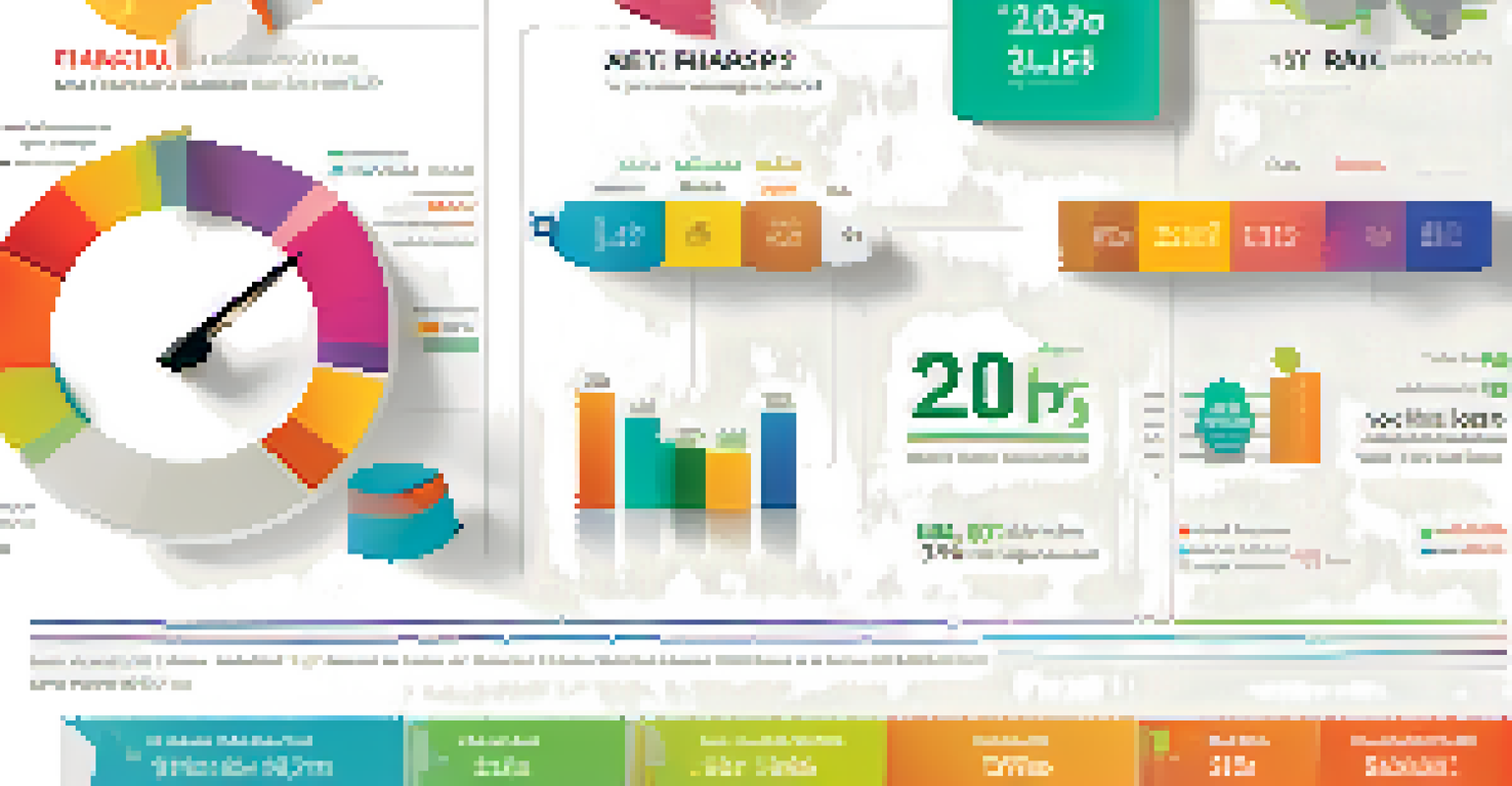How to Assess Financial Health Using Key Metrics

Understanding Financial Health: What It Means
Financial health is a broad term that reflects the overall state of your finances. It encompasses your income, expenses, savings, and investments. Just like a check-up at the doctor, assessing your financial health helps you identify areas that need attention or improvement.
It's not about how much money you make, but how much you keep, and how hard it works for you.
When we talk about financial health, we’re really looking at how well you’re managing your money. This can affect everything from your ability to save for retirement to how easily you can handle unexpected expenses. Understanding where you stand financially gives you the power to make informed decisions.
Overall, it’s about ensuring that your financial situation aligns with your personal goals. Whether you aim to buy a home, save for your children’s education, or simply achieve peace of mind, knowing your financial health is the first step toward achieving those dreams.
Key Metrics to Measure Financial Health
There are several key metrics that can help you assess your financial health accurately. Some of these include your net worth, debt-to-income ratio, and savings rate. Each of these metrics provides valuable insights into different aspects of your financial life.

For instance, your net worth is simply the difference between what you own and what you owe. A positive net worth indicates that you have more assets than liabilities, which is generally a good sign. Similarly, your debt-to-income ratio tells you how much of your income goes toward paying off debt, helping you understand your financial burden.
Assess Your Financial Health
Understanding your financial health involves evaluating factors like income, expenses, savings, and investments to align with your personal goals.
Lastly, your savings rate shows how much of your income you’re putting away for the future. A healthy savings rate can cushion you against emergencies and pave the way for long-term financial goals, making it a crucial metric to keep an eye on.
Calculating Your Net Worth: A Simple Guide
Calculating your net worth is easier than you might think, and it starts with listing your assets and liabilities. Your assets include everything from cash in the bank to property and investments, while liabilities cover loans, credit card debt, and other obligations. By subtracting your total liabilities from your total assets, you arrive at your net worth.
A budget is telling your money where to go instead of wondering where it went.
This number may fluctuate over time, but tracking it regularly can help you see the bigger picture. For example, if your net worth is increasing, it often indicates that you’re on the right track financially. Conversely, if it’s declining, it might be time to reassess your spending habits or investment strategies.
Remember, while a positive net worth is a good indicator, it’s essential to look at the trends over time. A single number doesn’t tell the whole story, but tracking your net worth can provide valuable insights into your financial journey.
Understanding Debt-to-Income Ratio: What It Is
Your debt-to-income (DTI) ratio is a key indicator of your financial health, representing the percentage of your income that goes toward debt payments. It’s calculated by dividing your monthly debt payments by your gross monthly income. A lower DTI suggests that you’re managing your debt well, while a higher DTI might indicate that you’re over-leveraged.
For example, if you earn $4,000 a month and have $1,200 in monthly debt payments, your DTI would be 30%. This is generally considered a manageable level, whereas a DTI above 40% could raise red flags for lenders and might hinder your ability to borrow money.
Key Metrics to Monitor
Important metrics such as net worth, debt-to-income ratio, and savings rate provide valuable insights into your financial situation.
Monitoring your DTI can help you make informed financial decisions, such as when to take on new debt or when to prioritize paying off existing obligations. Keeping your DTI in check is fundamental to maintaining financial stability.
The Importance of a Healthy Savings Rate
Your savings rate is the percentage of your income that you save each month, and it plays a crucial role in your overall financial health. A healthy savings rate typically ranges from 15% to 20%, depending on your financial goals and circumstances. This metric helps you build an emergency fund, invest for the future, and achieve your long-term objectives.
For example, if you earn $5,000 a month and save $1,000, your savings rate would be 20%. This means you’re setting aside a significant portion of your income for future needs, which can provide a safety net during tough times. Conversely, a low savings rate may leave you vulnerable to financial challenges.
Incorporating strategies like automatic transfers to your savings account can help you maintain a healthy savings rate. The key is to prioritize saving as a non-negotiable part of your budget.
Evaluating Your Spending Habits: A Critical Step
To truly assess your financial health, you need to take a close look at your spending habits. This means tracking where your money goes each month and identifying areas where you can cut back. By understanding your spending patterns, you can make more informed decisions about your finances.
For instance, if you notice that a significant portion of your income goes toward dining out, you might decide to cook at home more often. Small changes can add up to significant savings, freeing up more money to build your savings or pay down debt.
Budgeting for Financial Success
Creating a budget is essential for tracking income and expenses, helping you make informed decisions to improve your overall financial health.
Additionally, evaluating your spending can help you identify any unnecessary expenses. By prioritizing your needs over your wants, you can improve your financial health and work toward your goals more effectively.
The Role of Budgeting in Financial Assessment
Budgeting is a vital tool for assessing and improving your financial health. It provides a clear picture of your income, expenses, and savings goals, allowing you to make informed spending decisions. By creating a budget, you can ensure that your financial resources align with your priorities.
For example, if your goal is to save for a vacation, a budget can help you allocate funds specifically for that purpose. It also allows you to track your progress and make adjustments as needed. When you know where your money is going, you can stay on top of your financial goals.

Moreover, budgeting can reveal patterns in your spending that you may not have noticed before. This insight can help you make adjustments that improve your financial health, such as cutting back on discretionary spending or finding ways to increase your income.